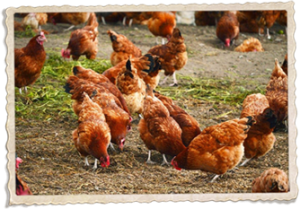Adding new hens to your existing flock can be an exciting yet challenging endeavor. That’s because while you’re busy diversifying your pre-existing crew, other hens will expect to maintain their coveted spots in the pecking order. So, what’s a devoted chicken owner to do? Abide by the following steps from Chickens for Backyards, and your new birds will feel right at home.
Prepare for Quarantine
It’s an unfortunate reality, but an important one. Anytime you purchase new chicks or full-grown hens, you will need to ensure they are quarantined for a total of four weeks. This move will help ensure they are not carrying any infections, illnesses, or health issues that can be caught by the rest of your flock.
Regardless of a hen’s initial health, the stress of a new environment can encourage illnesses, and you wouldn’t want to risk introducing your hen to others before symptoms have begun to manifest. Also, if your new birds are ill or happen to develop a sickness, you’ll be able to more easily treat the infected parties while they’re in quarantine, rather than worrying yourself with taking care of an entire flock.
Make Sure They’re Old Enough
Are your chicks old enough to protect themselves against larger birds? That is, are they older than six weeks? These are vital questions to ask yourself before moving forward with the introduction. Why? For starters, hens tend to huddle together like a popular group of middle school girls. In some cases, the existing birds in your flock may not be thrilled about their new neighbors at first. As such, you should wait to introduce newcomers until they can effectively defend themselves against unhappy hens.
Be Diplomatic and Start Slow
Once it’s finally time to bring your hen into the flock, it’s important to start slowly. Here are the first few steps you should take:
Step 1
First, allow the birds to see one another from a distance in a kind of peace-making gesture, but do not allow them to have direct physical contact with one another. Use a barrier to separate the new birds from the rest of your flock.
Step 2
After that you can start dropping the new birds in with the older members of the flock, but be wary of leaving them unsupervised.
Step 3
Allow roughly two weeks to pass, and then you can consider making the full transition.
You can also start out by keeping older hens cooped in temporary housing for the first two weeks, while allowing the new hens to stay in the main coop. After the first two weeks, you can start moving the older hens back into the main coop. This can help to prevent serious disruptions to the pecking order and make the transition a little easier.
Other tactics to distract your hens include hanging a head of cabbage out of reach of the flock, or adding a few large branches to the coop. The former will keep hens occupied, and the latter will create obstacles for veteran hens and give the newcomers a place to hide. With enough space you could also allow all your birds to range freely, but that will require a bit more caution.
If you’re looking to add new hens to your existing flock, look through our website here at Chickens for Backyards or contact us for more details!

